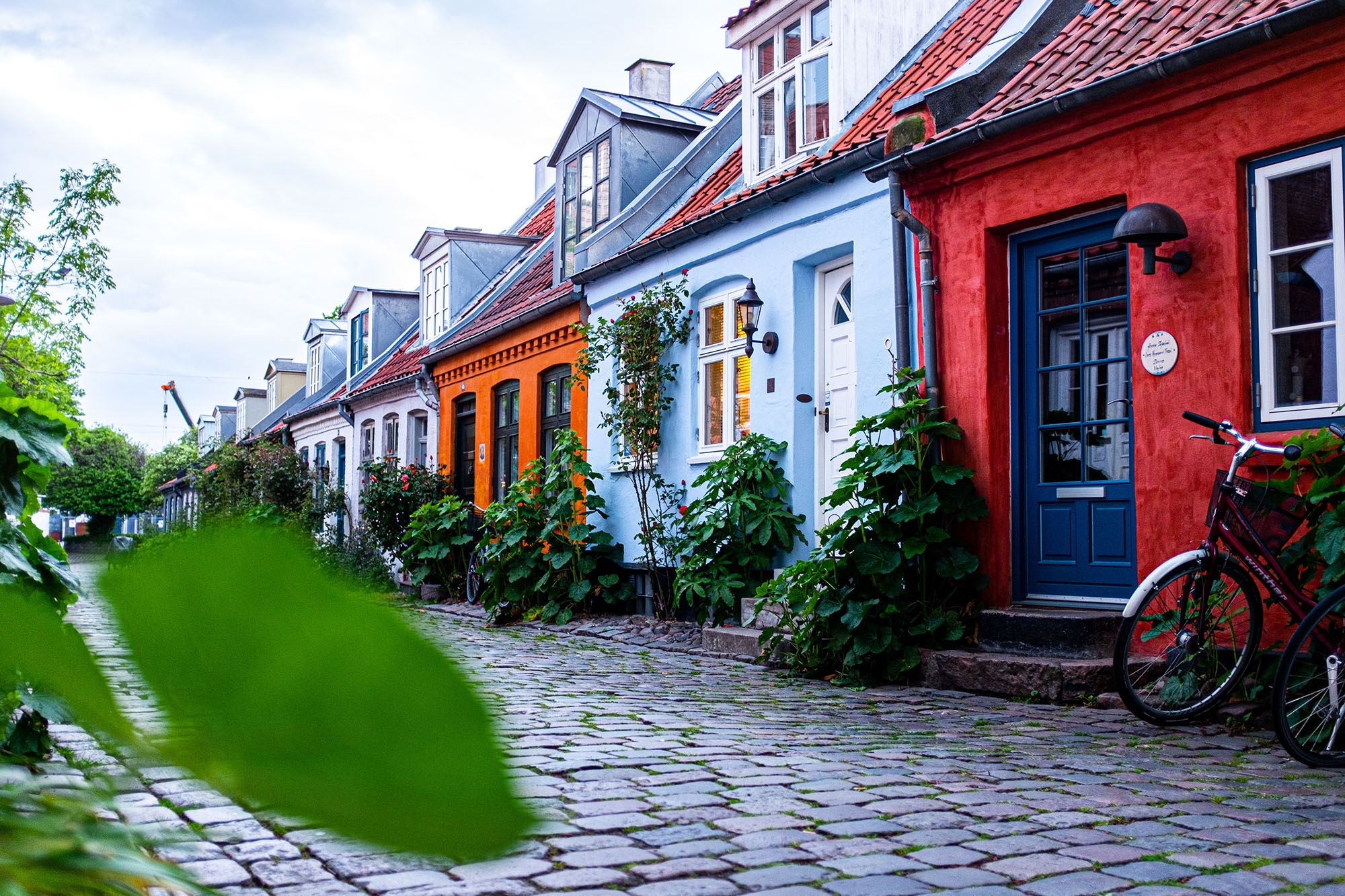Have you ever thought about learning Danish to be able to understand what the lady with the striking jumper in The Killing is actually saying? Yes? No? Well, anyway, here are a few facts to consider about the Danish language to give you an idea of what you could be getting yourself into.
Danish is spoken by about 6 million people around the world. Most live in Denmark, but Danish is also an official language in Greenland and the Faroe Islands – both autonomous constituent countries under the Kingdom of Denmark – as well as in the northern parts of neighbouring Germany, where Danish has minority status.
Danish is a North Germanic language, derived originally from Old Norse, and part of the Indo-European language family. It belongs to what is traditionally known as the East Scandinavian languages, along with Swedish, as opposed to the West Scandinavian languages, consisting of Norwegian, Icelandic and Faroese.
Due to geographic location and mutual intelligibility, more recently the classification has changed to instead divide the languages into Insular Scandinavian, consisting of Faroese and Icelandic, and Continental Scandinavian, consisting of Swedish, Danish and Norwegian.
Our Danish translation services
We offer translation services from English, French, German, Norwegian and Swedish into Danish, and from Danish into English.
Have you ever thought about learning Danish to be able to understand what the lady with the striking jumper in The Killing is actually saying? Yes? No? Well, anyway, here are a few facts to consider about the Danish language to give you an idea of what you could be getting yourself into.
Danish is spoken by about 6 million people around the world. Most live in Denmark, but Danish is also an official language in Greenland and the Faroe Islands – both autonomous constituent countries under the Kingdom of Denmark – as well as in the northern parts of neighbouring Germany, where Danish has minority status.
Danish is a North Germanic language, derived originally from Old Norse, and part of the Indo-European language family. It belongs to what is traditionally known as the East Scandinavian languages, along with Swedish, as opposed to the West Scandinavian languages, consisting of Norwegian, Icelandic and Faroese.
Due to geographic location and mutual intelligibility, more recently the classification has changed to instead divide the languages into Insular Scandinavian, consisting of Faroese and Icelandic, and Continental Scandinavian, consisting of Swedish, Danish and Norwegian.
1. Danish has so many vowels, even the Danes are struggling
In Danish, it’s all about the vowels! Danish has nine vowel letters: a, e, i, o, u, y, æ, ø, å (the final three not existing in English). But on top of this, there are a significant number of vowel phonemes – about 22 in total (though some count as many as 40!), which is more than most languages in the world. In comparison, English has about 12 vowel sounds and Spanish only 5.
While a 15-month-old Danish child understands an average of about 84 words, the number for a child of the same age in neighbouring Sweden was almost twice as high.
Studies at the Centre for Child Language at the University of Southern Denmark have actually shown (link in Danish) that the substantial number of vowels in Danish makes the language difficult to learn, even for Danish kids. By studying the language development of children in eight different countries, the researchers found that the number of vowel sounds in a language determines not only how many words a child understands, but also the number of words they are able to speak and use.
Accordingly, the researchers found that while a 15-month-old Danish child understands an average of about 84 words, the number for a child of the same age in neighbouring Sweden was almost twice as high.
While it should be mentioned that Danish kids usually pick it up along the way, it might be nice to know for anyone trying to learn the language that even the Danes themselves struggle with the number of vowel sounds, the difficult prosody and the weak and often “swallowed” consonants. According to this Norwegian comedy sketch, Danish has in fact reached such a level of unintelligibility that the Danes basically don’t understand each other any more.
2. Danish introduced a new letter only 60 years ago
The letter å, that Danish shares with the other Continental Scandinavian languages, actually did not exist in written Danish until it was introduced in a spelling reform in 1948, where it was intended to replace the double a (aa). This changed words like maa “may”, aal “eel” and faa “get” to må, ål and få respectively.
It hasn’t completely replaced the double a, however. For instance, some towns such as Aalborg never adopted the new convention into their name. And the city of Aarhus (the second biggest city of Denmark) – which had its name changed to Århus back in 1948 – actually decided to go back to the original spelling in 2011 to strengthen the international appeal of the town.
Especially in a digital world where people search and find information online, having a letter in the town’s name that only Nordic keyboards contain was considered a bit too much of an unnecessary challenge for the purpose of boosting tourism and international awareness.
3. Thrusting sounds
Danish is characterised by a unique prosodic feature called stød, which literally means “thrust”. Stød can be described as a “creaky” sound or a glottal stop. It actually serves as the sole distinguishing feature of a number of almost completely similar words with different meanings. It’s particularly useful when one of the words has silent consonants and the absence of stød would have made it impossible to distinguish between the two words.
As such, stød is the only way to distinguish minimal pairs such as the following, with the words containing stød to the right:
| mor “mother” |  mord “murder” |
| hun “she” |  hund “dog” |
| man “one/they” |  mand “man” |
| bønner “beans” |  bønder “peasants” |
| læser “reader” |  læser “reads” |
As is apparent from some of the pairs, knowing stød can stop you from getting into some quite awkward misunderstandings!
While stød is a very common prosodic feature in most Danish dialects, there is a geographic line going through the south of Denmark – the so-called stød-border (or stødgrænsen) – that goes through central South Jutland all the way to Bornholm, south of which Danish is spoken without the use of stød.
4. A strange number system
Danish has an infamously odd and convoluted number system that even fellow Scandinavians find difficult to make sense of. Like German and Old English, Danish starts counting with the units before the tens from 21 and above, resulting in numbers such as syvogtyve “seven-and-twenty” and fireogtredive “four-and-thirty”.
Things go from tricky to just plain silly with numbers that don’t divide evenly by twenty.
However, the real challenge begins after the number 49. Telling the numbers 50, 60, 70, 80 and 90 apart can be a bit tricky. Danish counts its numbers above 49 using the vigesimal system, where numbers are based on the number 20. To take an example: “sixty” in Danish is tres, which in older versions of the language was tre sinds tyve, literally “three times twenty”. Likewise, firs “eighty”, was originally fire sinds tyve or “four times twenty”.
Where things go from tricky to just plain silly is with numbers that don’t divide evenly by twenty. On top of counting by twenty, the Danish number system has also kept a somewhat obsolete way of dividing by halves. Consider halvfjerds “seventy”, which actually means “half-fourth-t(imes-of-twenty)”, or 3.5 × 20.
For good reason, most people new to Danish are encouraged to learn the numbers by drill, and not by trying to understand the logic of it all.

Nordic dialect map
Learn about the languages and dialects of the entire Nordic region with our interactive map.
Nordic dialect map
Learn about the languages and dialects of the entire Nordic region with our interactive map.
So, how do you approach it if you happen to feel inspired to learn Danish? Maybe do as a group of students were instructed to do by their Danish professor at the University of Vienna: simply to put a potato in their mouth to better be able to produce all the strange and difficult sounds. You’re strongly encouraged to try this method at home. It if doesn’t help improve your Danish, it might at least give the people around you a good laugh!




